Gucci marks its centenary year in 2021 with a unique collection that honours the past, present and future
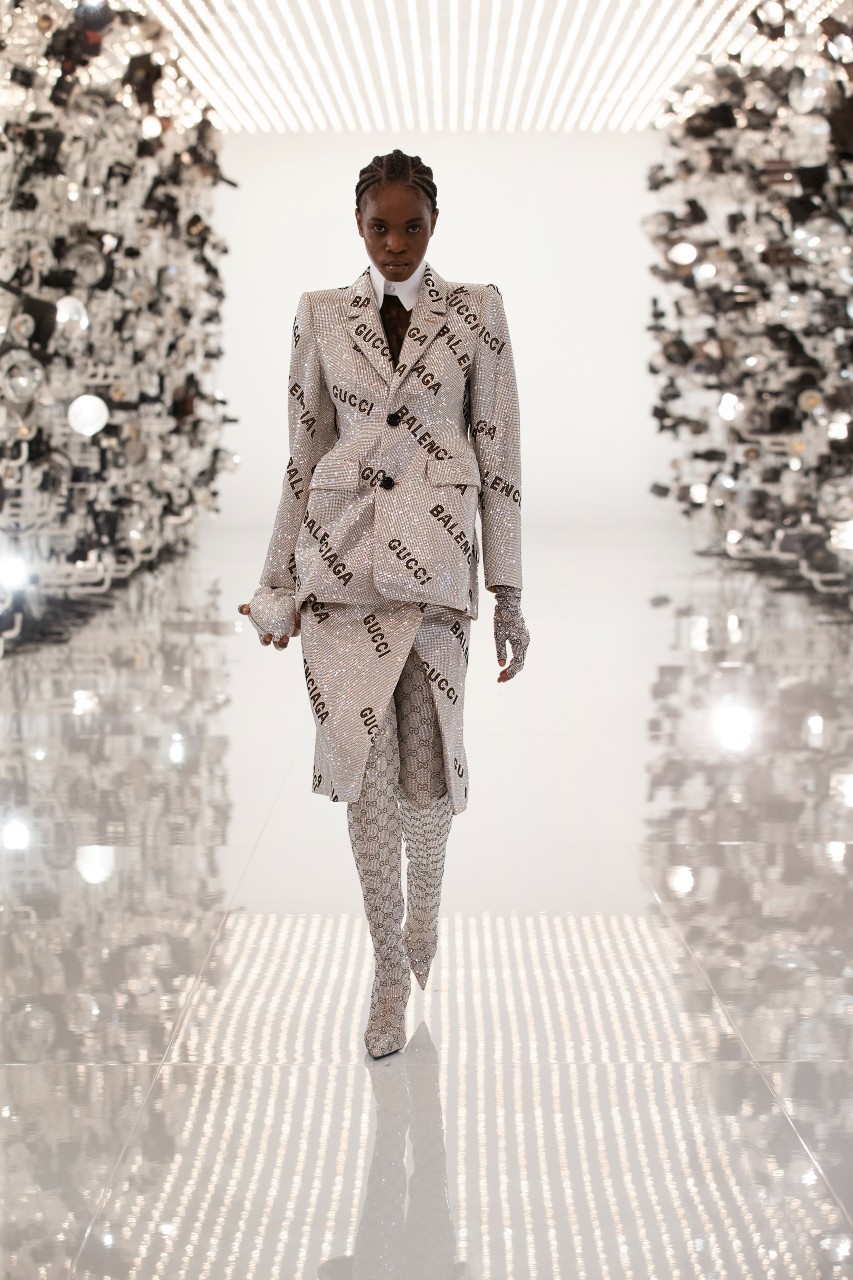
Founded by Guccio Gucci in 1921 Gucci is one of the oldest fashion houses in the world. Before creating his label in Florence, Guccio worked as a bellboy at London’s Savoy hotel and was inspired to create his company by the luxurious suitcases and trunks carried by the rich and famous guests that passed through the doors of the iconic property. In 1921 Guccio opened his first shop on 7, Via della Vigna Nuova in Florence where he imported and sold leather luggage. He also opened a small workshop to create his own leather goods, made by local craftsmen which soon grew into a larger workshop with 60 artisans.

In 1937 Gucci launched its first handbags, which were created using unique techniques developed by its artisans. It became a family business with Guccio’s wife and children all working in the Florence shop and it soon began to expand with a second location in Rome on the advice of Guccio’s son Aldo. During the Second World War when leather was scarce in Europe, Gucci began working with other materials such as cotton canvas and launched a variety of accessories and boots for the Italian infantry. The canvas was distinguished by a signature double-G symbol combined with prominent red and green bands. After the war, the Gucci crest, which showed a shield and armoured knight surrounded by a ribbon inscribed with the family name, became synonymous with the city of Florence.
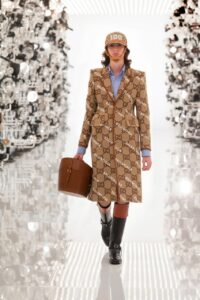
In the late 1940s Guccio Gucci distributed the shares of the company to his three sons (Aldo, Vasco, Rodolfo) and the house soon began to explore with other materials and creations. After Guccio’s death in 1953, the ouse opened its first store in the United States before Venturing further across Europe to Paris and London. Over the next few decades, some of the iconic Gucci motifs that remain today were introduced: The double-G logo for belt buckles and other accessory decorations debuted in 1964, the Flora scarf was designed in 1966 by Rodolfo Gucci and Vittorio Accornero for Grace Kelly Princess of Monaco. In October 1968, Gucci opened a store Rodeo Drive, driving many Hollywood stars to endorse the brand. With this store opening came the launch of Gucci’s first dresses.
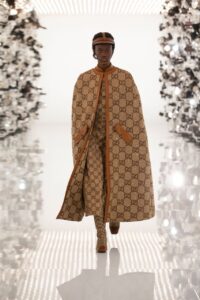
After remaining a family business throughout the eighties, in 1989 Dawn Mello was hired as the House’s Executive Vice President and Chief Designer. She reduced the number of stores and the number of products the brand was producing in a move that would aim to rebuild Gucci’s exclusivity. Mello revived some of the house’s iconic designs including the Bamboo bag and the Gucci loafer and she moved the headquarters back from Milan to Florence, where the history of Gucci is deeply rooted. In a move that would soon define this era of the brand, Mello hired Tom Ford to oversee the women’s ready-to-wear collection and in 1994 Ford was named Creative Director of the house. The two worked together to revise the brand’s archives and design pieces that were relevant at that moment but also honoured the brand’s history. Ford’s provocative designs embodied daring nineties style and continue to be some of the most iconic moments in the history of the brand.

Following Ford’s departure in 2004 three designers continued at the helm of the brand: John Ray, Alessandra Facchinetti and Frida Giannini, all of whom had worked under Ford’s creative direction. Facchinetti was promoted to Creative Director of Women’s wear in 2004 and designed for two seasons before leaving the company. Ray served as Creative Director of Menswear for three years. Frida Giannini – a Gucci handbag designer since 2002, head of accessories since 2004, and Creative Director of women’s ready-to-wear and accessories since 2005 – was appointed Creative Director of Gucci in 2006. Patrizio di Marco, formerly CEO of Bottega Veneta, was named CEO of Gucci in 2008.
In December 2014, Marco Bizzarri, also a former CEO of Bottega Veneta, was named CEO and in January 2015, he appointed Alessandro Michele as Artistic Director. For the Fall 2015 collection, Michele presented a fresh look for the brand’s collections that combined his refined vision with the history of the house. He launched the “Renaissance of Gucci”, featuring revived classics and creating new iconic products.

Alessandro Michele
This year, as the brand celebrates 100 years since its founding, Michele leads the festivities with a collection that perfectly represents the past, present and future. “Going through the hour when everything originated is a great responsibility for me, and a joyful privilege. It means being able to open the locks of history and linger over the edge of the beginning. It means soaking in that natal source to relive the dawn and the coming into view.” Said Alessandro Michele, Gucci Artistic Director in the show notes. But he wanted to be clear that the history of Gucci is no ordinary one. In fact, it is one that is marked by a long series of “endless births and constant regenerations.” And as we celebrate the past he wanted to open yet another chapter of the iconic Maison. “In my work, I caress the roots of the past to create unexpected inflorescences, carving the matter through grafting and pruning.” He said. “I appeal to such ability to reinhabit what has already been given. And to the blending, the transitions, the fractures, the concatenations. To escape the reactionary cages of purity, I pursue a poetics of the illegitimate…On this occasion, then, I want to honour my filial affection betraying the legacy that was handed down to me. Because the promise of a never-ending birth is only renewed through an evolving capacity.”
Looking back through the history from those first designs based on the trunks of the elite to the old Hollywood glamour of Marilyn Monroe to the sexy days of Tom Ford and the elegant codes of men’s tailoring Michele took the House back to the beginning with a special virtual presentation with a set inspired by no other than London’s Savoy Hotel which is so deeply embedded into the brand’s history, to present a celebratory collection.
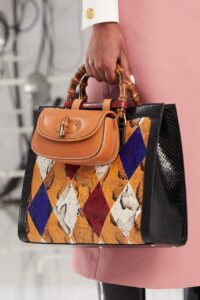
The Gucci Aria collection is a celebration of all that the House has embodied so far but also featured a “hacking” of Balenciaga’s Creative Director Demna Gvasalia’s designs. Michele didn’t see this as a collaboration but more as a lifting of some of Balenciaga’s iconic shapes and symbols, of course with the permission of the designer. Presented in a virtual film this special collection is one to remember. Equestrian influences, combined with delicate lace, brightly coloured accents, exquisitely tailored suits and logo emblazoned casual wear made for something unexpected and unique. The standout pieces of the collection were those that combined both the Gucci and Balenciaga logos: no double pieces that will go down in history, should you be able to get your hands on them! Michele combined classic Gucci designs with Balenciaga silhouettes to create a seamless combination of the two fashion houses.
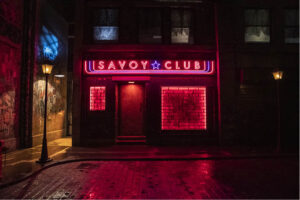
This collection is a means of celebration. “It’s rather like a deep and ecstatic diving in everything we yearningly miss today: a feast of air. A jubilee of breath. So the idea of the party glorifies in the generating power of nature and in the breath of life that pervades it.” Explains Michele.
Gucci Aria will be available this Fall at Gucci stores globally with further projects to celebrate the 100 anniversary expected to roll out throughout the year.















